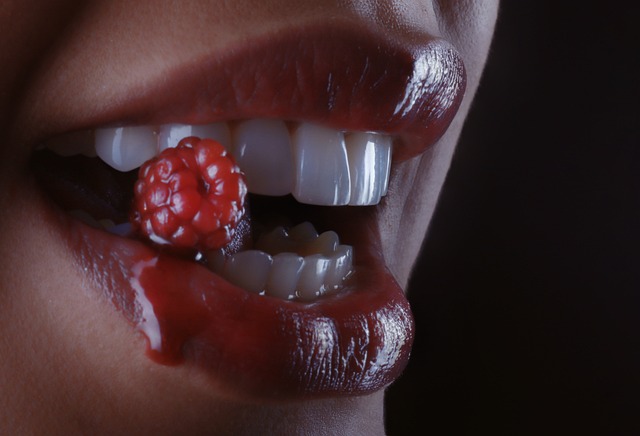
Category: Pediatric Dentistry Eugene Oregon
Pediatric Dentistry Eugene Oregon: A Comprehensive Overview
Introduction
In the vibrant city of Eugene, Oregon, a specialized dental care sector has emerged, catering specifically to the unique needs of children—Pediatric Dentistry Eugene Oregon (PDEO). This field encompasses not just oral health services but also the creation of a positive, child-friendly environment that encourages lifelong healthy habits. With a focus on prevention, education, and individualized treatment plans, PDEO plays a pivotal role in shaping the dental well-being of young minds and bodies. This article aims to delve into every facet of this essential healthcare service, exploring its global impact, economic significance, technological innovations, regulatory framework, challenges, and promising future prospects.
Understanding Pediatric Dentistry Eugene Oregon: A Specialized Approach
Definition and Core Components
Pediatric Dentistry Eugene Oregon refers to the specialized dental care provided specifically for children from infancy through adolescence. It involves a unique combination of knowledge from pediatrics, dentistry, and behavioral science. The core components include:
- Preventive Care: Regular check-ups, cleanings, fluoride treatments, and dietary guidance to prevent tooth decay and gum disease.
- Educational Services: Teaching children about oral hygiene, the proper use of dental appliances, and healthy eating habits.
- Restorative Dentistry: Fixing cavities, broken teeth, and other oral defects with materials specifically designed for pediatric use.
- Pediatric Oral Surgery: Procedures such as tooth extraction, wisdom tooth removal, and corrective jaw surgery tailored to children’s physical development.
- Special Needs Care: Tailored treatment plans for children with special health care needs, including autism, Down syndrome, and cerebral palsy.
- Sedation Dentistry: Using medication to help anxious children relax during dental procedures, ensuring a more comfortable experience.
- Growth and Development Monitoring: Regular checks to ensure proper oral development and identify any potential issues early on.
Historical Context
The field of pediatric dentistry has evolved significantly over the past century, driven by advancements in medical science and an increasing awareness of children’s unique dental needs. In the early 20th century, many dentists had limited training in treating children, often viewing pediatric care as a niche specialty. However, with rising childhood obesity rates and associated dental issues, there was a growing demand for specialized services.
In the 1970s, the American Academy of Pediatric Dentistry (AAPD) was established, marking a pivotal moment in recognizing pediatric dentistry as a distinct discipline. This period saw the development of evidence-based guidelines, improved training programs, and increased research dedicated to pedodontics. Today, PDEO is an integral part of comprehensive healthcare systems, with many countries recognizing its importance in preventive care and overall child well-being.
Global Impact and Trends
Pediatric Dentistry Eugene Oregon has left a significant global footprint, influencing dental practices worldwide through its emphasis on prevention and child-centric care. Here’s a glimpse into its international influence:
| Region | Trends and Impact |
|---|---|
| North America | The United States and Canada have robust pediatric dentistry sectors, with high adoption rates of evidence-based practices. The AAPD sets standards for training and practice, ensuring consistent care across the region. |
| Europe | Many European countries have integrated pedodontics into their national health systems, recognizing its preventive benefits. The UK, for example, has a well-established network of pediatric dental specialists, while Germany focuses on community-based care. |
| Asia Pacific | Countries like Japan and South Korea have highly advanced pediatric dentistry, with an emphasis on aesthetic and functional outcomes. China is also witnessing growth, driven by increasing awareness and improved access to oral healthcare. |
| Middle East and Africa | The region shows varying levels of development, with some countries investing heavily in pediatric dental infrastructure while others face challenges due to limited resources and access. |
Economic Considerations
The economic implications of Pediatric Dentistry Eugene Oregon are multifaceted, impacting both healthcare systems and individual practices.
Market Dynamics
- Growing Demand: With increasing childhood populations and growing awareness of oral health, the global demand for pediatric dental services is rising steadily.
- Competitive Landscape: In cities like Eugene, competition among pediatric dentists is high, leading to diverse service offerings, innovative marketing strategies, and a focus on patient satisfaction.
Investment Patterns
- Private Practices vs. Clinics: Many pediatric dentists opt for private practices, offering personalized care in a familiar setting. Clinics and hospital-affiliated practices cater to public health initiatives and insurance-based models.
- Technology Upgrades: Investments in technology, such as digital x-rays, advanced dental equipment, and child-friendly software, are common to enhance efficiency and patient experience.
Economic Impact on Systems
In Oregon, PDEO contributes significantly to the state’s economy:
- Job Creation: Pediatric dentists, their support staff, and related professionals generate employment opportunities, contributing to local economic growth.
- Reduced Healthcare Costs: By focusing on prevention, PDEO can help reduce the burden of dental diseases, leading to lower treatment costs in the long term.
- Community Health Benefits: Improved oral health among children can lead to better overall health, reducing the strain on public healthcare systems.
Technological Advancements
Technology plays a pivotal role in shaping the future of Pediatric Dentistry Eugene Oregon, enhancing diagnostic capabilities, treatment options, and patient care.
Key Innovations:
- Digital Imaging: High-resolution digital x-rays provide detailed oral images, enabling early detection of decay, gum disease, and other conditions.
- Laser Dentistry: Lasers are used for precise procedures like tooth shaping, gum reshaping, and cavity removal, offering faster healing times and reduced discomfort.
- 3D Imaging and Printing: These technologies enable dentists to create custom dental appliances, such as braces and crowns, tailored to each patient’s anatomy.
- Teledentistry: Remote consultations using video conferencing allow children in remote areas to access pediatric dental care, bridging the gap in access to specialists.
- Mobile Dental Units: These units bring dental services directly to schools, community centers, and underserved areas, increasing accessibility for low-income families.
Policy and Regulation
The practice of Pediatric Dentistry Eugene Oregon is subject to various policies and regulations that ensure quality care and patient safety.
Key Frameworks:
- Licensing and Certification: Dentists practicing pedodontics must obtain licenses from state dental boards, adhering to education, training, and examination requirements. Additional certifications in pediatric dentistry are also available.
- Insurance Coverage: Policies often include provisions for pediatric dental care, ensuring accessibility for insured children. The Oregon Health Plan provides dental coverage for low-income families.
- Public Health Initiatives: Local health departments collaborate with dental professionals to promote oral health through community education programs and school-based dental services.
- Data Privacy and Security: Strict regulations govern the handling of patient data, ensuring confidentiality and security in electronic health record systems.
Challenges and Criticisms
Despite its many achievements, PDEO faces several challenges that require strategic solutions to ensure sustainable growth and improved access to care.
Common Issues:
- Access to Care: Children from low-income families may face barriers due to cost, insurance limitations, or a lack of nearby pediatric dental practices.
- Shortage of Specialists: The demand for pedodontists often exceeds the supply, leading to longer wait times and challenges in providing timely care.
- Behavioral Management: Treating anxious children can be challenging, requiring specialized training and techniques to ensure positive dental experiences.
- Continuous Education: Keeping up with the latest research, technologies, and best practices is essential but requires significant investment in professional development.
Proposed Solutions:
- Public-Private Partnerships: Collaborating with community organizations and private practices can improve access for underserved populations, offering subsidized or free services.
- Scholarships and Incentives: Encouraging dental students to specialize in pedodontics through scholarships and loan repayment programs can help address the specialist shortage.
- Behavioral Science Integration: Incorporating behavioral science training into dental curricula prepares dentists to manage anxious patients effectively.
- Online Education Platforms: Developing online resources and courses can facilitate continuous education, making it more accessible and affordable for practitioners.
Case Studies: Exemplary Applications
1. Community Dental Clinic Transformation
In a low-income neighborhood of Eugene, a community dental clinic implemented a comprehensive PDEO program to address the region’s oral health disparities. They achieved remarkable results by:
- Establishing an on-site pediatric dentist, reducing travel barriers for families.
- Offering sliding scale fees based on income, making care accessible to all.
- Implementing school-based dental programs and educational workshops for parents.
- Partnering with local schools to provide free dental screenings and preventive services during health fairs.
This initiative led to a significant increase in the number of children receiving regular dental care, improved oral health outcomes, and increased community engagement in promoting oral hygiene practices.
2. Teledentistry Innovation
A rural school district in Oregon faced challenges providing dental care for its students due to limited access to specialists. They adopted a teledentistry model, connecting students with pediatric dentists via video conferencing. The program’s success included:
- Reduced travel time and costs for both students and dentists.
- Increased availability of specialized services, enabling early detection and treatment of dental issues.
- Improved student comfort levels during dental examinations, as the familiar school environment reduced anxiety.
- Cost savings for the district through reduced transportation expenses and improved oral health outcomes.
Future Prospects: Emerging Trends and Growth Areas
The future of Pediatric Dentistry Eugene Oregon is bright, with several emerging trends and growth areas shaping its trajectory:
Growth Areas:
- Preventive Care Expansion: Further emphasis on preventive measures, including dietary counseling, community water fluoridation, and oral hygiene education in schools.
- Special Needs Dental Care: Increasing demand for tailored services for children with developmental disabilities, autism, and other special health care needs.
- Digital Transformation: Continued integration of technology, such as artificial intelligence, to enhance diagnostic accuracy, treatment planning, and patient engagement.
- Oral Health Literacy: Promoting oral health literacy among parents and caregivers to empower them to make informed decisions about their children’s dental care.
Emerging Trends:
- Personalized Medicine: Using genetic and biomarker data to tailor treatment plans, ensuring optimal outcomes for individual patients.
- Telehealth Growth: Teledentistry will likely become even more prevalent, bridging the gap in access to pediatric dental specialists across rural and urban areas.
- Oral-Systemic Health Connection: Growing recognition of the link between oral health and overall systemic health, leading to integrated care models.
- Sustainable Dental Practices: Adopting eco-friendly materials, energy-efficient equipment, and waste reduction strategies to minimize the dental practice’s environmental impact.
Conclusion: Shaping the Future of Pediatric Care
Pediatric Dentistry Eugene Oregon represents a specialized field that is transforming oral healthcare for children. Through its focus on prevention, education, and evidence-based practices, it sets the standard for maintaining healthy smiles and overall well-being among young individuals. The global influence of PDEO, evident in its widespread adoption and continuous innovation, underscores its importance as a vital component of modern healthcare systems.
As we look to the future, the field is poised for further growth and development, driven by technological advancements, evolving policies, and a growing recognition of oral health’s role in overall systemic well-being. By addressing challenges and capitalizing on emerging trends, Pediatric Dentistry Eugene Oregon will continue to make significant contributions to the lives of children and families within the community and beyond.
FAQ Section: Addressing Common Concerns
Q: How can I find a pediatric dentist in my area?
A: You can start by asking for referrals from your primary care physician or local health clinic. Additionally, online directories and reviews can help identify qualified pediatric dentists near you.
Q: What should I expect during my child’s first dental visit?
A: During the first visit, the dentist will typically perform a gentle examination, clean your child’s teeth, and educate both you and your child about oral hygiene practices. It’s a chance to build familiarity and comfort with the dental environment.
Q: How often should my child see a pediatric dentist?
A: The frequency depends on your child’s individual needs. As a general guideline, children should visit every six months for a check-up and cleaning. However, your dentist may recommend more frequent visits based on their assessment.
Q: Are dental X-rays safe for children?
A: Dental X-rays are considered safe when performed appropriately. Modern digital technology minimizes radiation exposure. Dentists will use X-rays only when necessary to diagnose and treat oral health issues. Always discuss any concerns with your child’s dentist.
Q: How can I help my anxious child during dental visits?
A: Open communication, positive reinforcement, and a calm demeanor can help ease anxiety. Consider discussing dental experiences in advance, bringing familiar items from home, and choosing a dentist known for their gentle approach to treating anxious patients.









